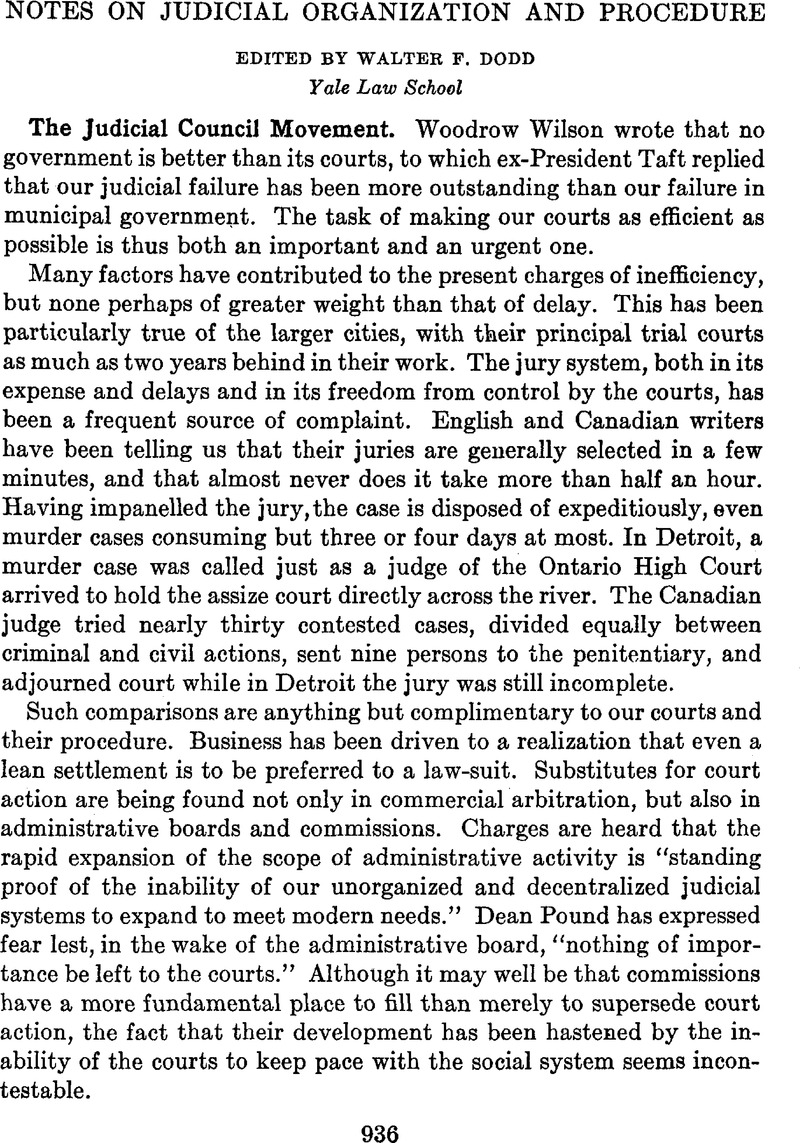Article contents
The Judicial Council Movement
Published online by Cambridge University Press: 01 August 2014
Abstract

- Type
- Notes on Judicial Organization and Procedure
- Information
- Copyright
- Copyright © American Political Science Association 1928
References
1 “The Causes of Popular Dissatisfaction with the Administration of Justice,” 29 Am. Bar Assoc. Rep. 395 (1906)Google Scholar.
2 Letter from Carrington T. Marshall, president of the council, dated August 18, 1928.
3 “Attacks on the Courts and Legal Procedure,” 5 Ky. L. Jour. 14–15Google Scholar.
4 It is possible that the proposal for the Conference originated with him. See the statement of Representative Walsh in the House, 62 Cong. Rec. 202.
5 At the time when the bill was passed the Chief Justice was also favoring a mixed council of judges and attorneys to regulate practice and procedure. See 6 Jour. Am. Jud. Soc. 36, 46.
6 Constitutional amendment in effect November 2, 1926.
7 The Oregon council, in its 1926 report, recommended that two practicing attorneys and one prosecuting attorney be added to the council, as well as the chairmen of the judiciary committees of the legislature. The California council contains one justice of the peace, who is, of course, primarily engaged in the practice of law. R. H. Phillips, secretary of the Connecticut council, reports that “without active practitioners on it, the council would not function.”
8 Nearly all can require reports of various court officials, and a few of any government officer. An amendment giving such authority was found necessary in California, where its absence seriously handicapped the council in its initial work. Several can compel witnesses to testify and produce books and documents.
9 A similar experience in Detroit seems to bear out the conclusion that the number of suits formerly contested for purposes of delay exceeds those now brought because of the certainty of a speedy trial. The Detroit circuit court, feeling that many appeals from justices' courts were taken only for delay, decided to try such cases in the inverse order of their appeal, thus keeping the current appeals to date. Since the city was growing, an increased number of appeals would normally be expected. Instead, the number taken fell off nearly one half.
10 Quoted by Waste, Chief Justice, “One Year of the Judicial Council,” Cat. St. Bar Jour., Jan., 1928Google Scholar.
11 Report of the Fifth Conference of Senior Circuit Judges, Rep. Atty. Gen. (1926), 5, 7.
- 1
- Cited by





Comments
No Comments have been published for this article.